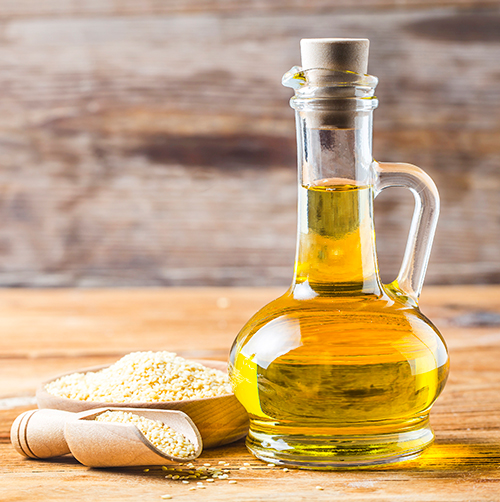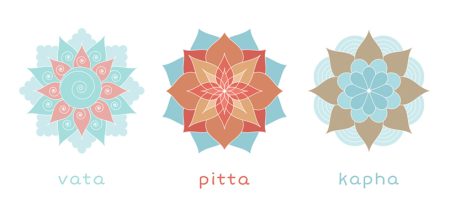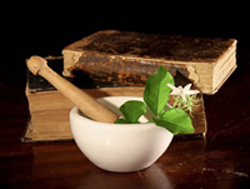by Chahna Tailor Gupta
Happy November!
As we approach the fall and winter seasons, it is important that we continue to keep ourselves balanced by keeping up with our ritucharya (seasonal routine). These seasons have guna (qualities) that are the same as vata dosha which can bring our body out of balance. Vata dosha is the dosha of movement. It helps with circulatory movement in the body and the movement of different biological processes such as digestion. However, it can also move us from balance to imbalance.
 Vata dosha can manifest with primordial symptoms such as constipation, on-and-off metabolism, dryness (of the skin, hair, mouth, eyes, or lips), aches and pains, nervous system issues, the cracking of joints, twitching, insomnia, the feeling of always being cold, bad circulation, headaches, anxiety, and more. Although these seasons can bring vata out of balance more easily than other seasons can, a vata imbalance can occur any time of the year due to one’s diet, lifestyle, and/or environment.
Vata dosha can manifest with primordial symptoms such as constipation, on-and-off metabolism, dryness (of the skin, hair, mouth, eyes, or lips), aches and pains, nervous system issues, the cracking of joints, twitching, insomnia, the feeling of always being cold, bad circulation, headaches, anxiety, and more. Although these seasons can bring vata out of balance more easily than other seasons can, a vata imbalance can occur any time of the year due to one’s diet, lifestyle, and/or environment.
Because vata dosha is characterized by dryness, cold, and movement, we can balance it with moisture, warmth, and slowness. A perfect way to balance vata dosha (regardless of the season) is with daily self-massage with oil, or abhyanga. In Sanskrit, sneha means oil – and love. Abhyanga is considered self-pampering (showing yourself some well-deserved love), so this is the perfect way to balance yourself if you’re feeling any vata symptoms.
 Steps for self-abhyanga:
Steps for self-abhyanga:
- Open a bottle of sesame oil and warm up about half a cup
- Generously apply the oil to your whole body
- At a relaxed pace, massage up and down your arms and legs
- In a clockwise circular motion, massage your chest, abdomen, back, rear, joints (front and back), scalp, face, ears, and neck
- Massage your feet (don’t forget to massage in between the toes).
- Keep the oil on your body for 15 minutes to allow the skin to absorb it
- Finish showering yourself with love by taking a warm shower to wash off
If your skin is more prone to drying out, you can do your abhyanga after your shower (if you don’t mind leaving the oil on). That’s what I do! In Ayurveda, there are 7 tissues in the body, and it takes 2 minutes for each tissue to absorb the oil. Leaving the oil on for 15 minutes allows each tissue to take in the oil.
Abhyanga is a great way to keep you and your vata dosha healthy and happy. It should definitely be a part of your dinacharya and/or ratricharya (day and/or night routine). It should be done at a faster, more stimulating pace two to three times per week for those with kapha dominance. For those with pita dominance, massage with moderate pressure at a slightly slower pace, three to four times per week. Those with vata dominance, should massage with light pressure at a slow pace for four to five (or more) times a week. Everyone has the three doshas within them. Sesame oil is considered to be tridoshic and is suggested for all people regardless of their dominant dosha.
When all else fails, remember: Oil will always be there for you! So will I. Feel free to reach out for consultations.
About the Author
 Chahna Tailor, a certified yoga instructor, has a background in occupational therapy and health science & administration. Chahna deepened her yoga practice by training in Rishikesh, India, where she studied the science behind yoga as a whole. Chahna provides yoga, pranayama, and meditation services through her company Namaskar To You. A volunteer for Ekal Vidyalaya, Chahna is also a Registered Yoga Teacher with Yoga Alliance. She is currently pursuing a doctoral degree in Ayurvedic Medicine while continuing her self-studies in yoga.
Chahna Tailor, a certified yoga instructor, has a background in occupational therapy and health science & administration. Chahna deepened her yoga practice by training in Rishikesh, India, where she studied the science behind yoga as a whole. Chahna provides yoga, pranayama, and meditation services through her company Namaskar To You. A volunteer for Ekal Vidyalaya, Chahna is also a Registered Yoga Teacher with Yoga Alliance. She is currently pursuing a doctoral degree in Ayurvedic Medicine while continuing her self-studies in yoga.













